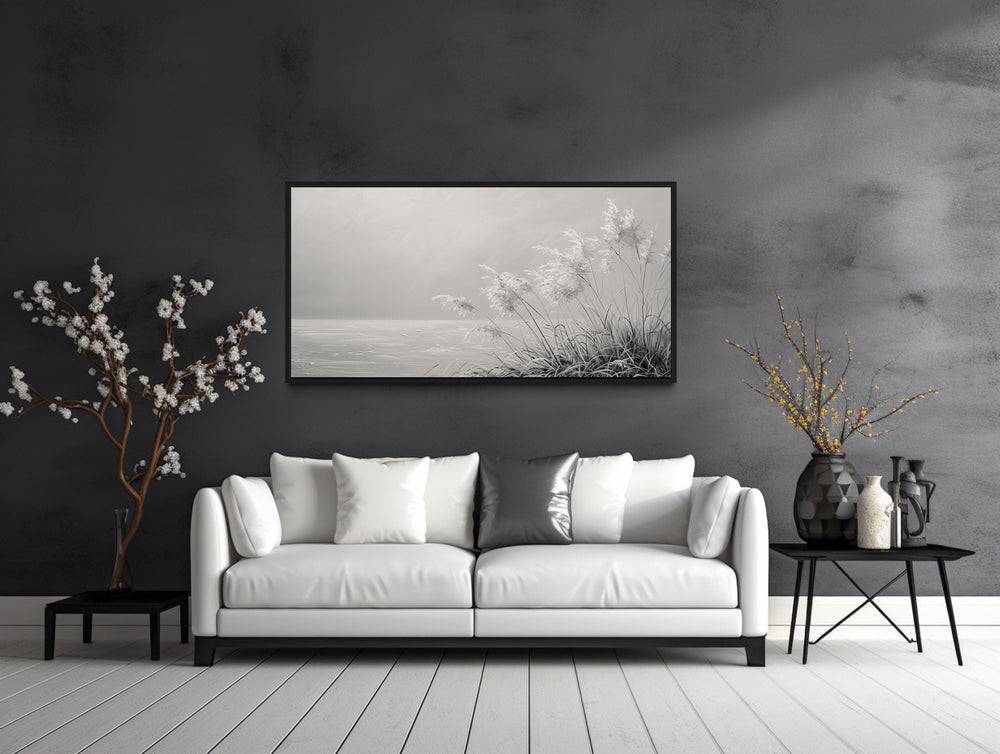How High to Hang Large Wall Art: Tips for Photographers
For professional photographers, knowing how high to hang large wall art is as crucial as capturing the perfect shot. The placement of your art pieces can enhance the visual appeal of a room, drawing attention to the details and emotions captured in your work. In this article, we delve into the intricacies of hanging large wall art, ensuring it complements the space and resonates with viewers.

Understanding the Basics of Hanging Wall Art
Before diving into specific heights, it's important to understand why the height matters. Art that is hung too high or too low can disrupt the harmony of a room. The general rule of thumb is to hang art at eye level, but this can vary depending on the size of the art and the space it occupies. For more tips, check out large art above bed tips.
Factors to Consider
There are several factors to consider when determining the height for your large wall art:
- Room Function: The purpose of the room can influence the height. Living rooms or galleries may require slightly different placements than bedrooms or hallways.
- Viewer's Perspective: Consider the average height of viewers and the typical activities in the room. Are people usually standing or sitting?
- Art Size: Larger pieces might need to be positioned lower to create a balance with the surrounding space.
For unique spaces like stairwells, you might find this article on hanging art on stairwells helpful.
The Ideal Height for Large Wall Art
The most commonly recommended height is 57 to 60 inches from the floor to the center of the artwork. This standard is based on the average human eye level. However, for larger pieces, you might want to adjust slightly. Large artwork can be a focal point in a room, so it's essential to ensure it is neither too overpowering nor too understated.
When hanging multiple pieces or creating a cluster, ensure the center of the entire arrangement is at eye level. For more on arranging art, see our guide on creating no-frame photo wall displays.
Using Furniture as a Guide
Another effective method is to use furniture as a reference point. For example, when hanging art above a sofa, maintain a gap of 6 to 12 inches between the top of the furniture and the bottom of the artwork. This creates a cohesive look without making the wall space feel cramped.
Similarly, for art above a bed, a gap of 8 to 10 inches is generally recommended. Explore more in our large art above bed tips article.
Considerations for Different Rooms
Living Room
In living rooms, where people often gather, art should be at a level where it can be admired while standing or sitting. Large pieces should be prominent but not so high that they require viewers to strain their necks. For more ideas on utilizing space, visit Big Wall Decor.
Bedroom
In bedrooms, art can be more personal and should be placed where it can be easily viewed from the bed. The art should complement the room's decor and create a sense of tranquility.
Hallways and Corridors
Since these areas are often narrow, larger pieces can be overwhelming. Consider using smaller clusters or a series of medium-sized pieces to create a gallery effect. For larger walls, see our tips on scaling art for big walls.
Conclusion
Understanding how high to hang large wall art can significantly enhance your presentation as a professional photographer. By considering factors like room function, viewer perspective, and art size, you can ensure your pieces are displayed at their best. Whether you're showcasing in a gallery or a client's home, these guidelines will help you create a stunning visual impact.
For more ideas on wall art placement, you might find inspiration from MoMAA's oversized wall art ideas.

FAQ
What is the best height to hang large wall art?
The ideal height is 57 to 60 inches from the floor to the center of the artwork, but this can vary based on the room and art size.
Can I hang large art above furniture?
Yes, maintain a gap of 6 to 12 inches between the top of the furniture and the bottom of the artwork for a balanced look.
What should I consider for multiple pieces?
Ensure the center of the entire arrangement is at eye level, keeping the pieces cohesive and visually appealing.

